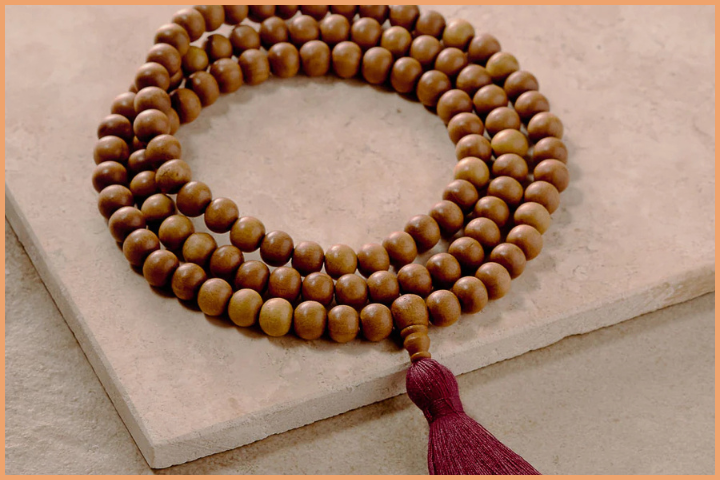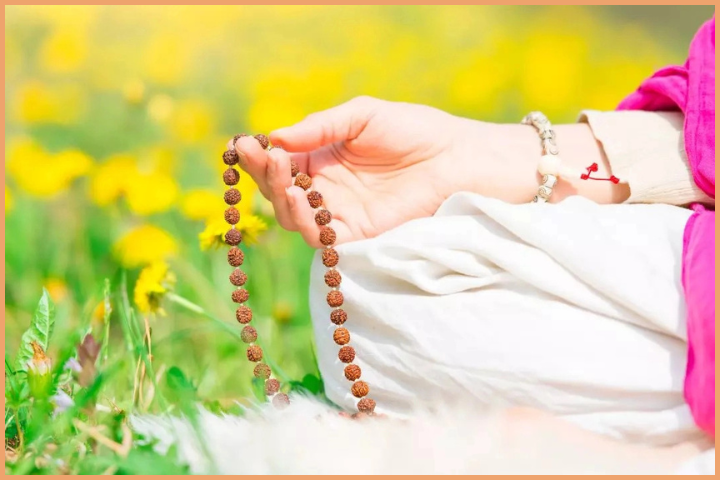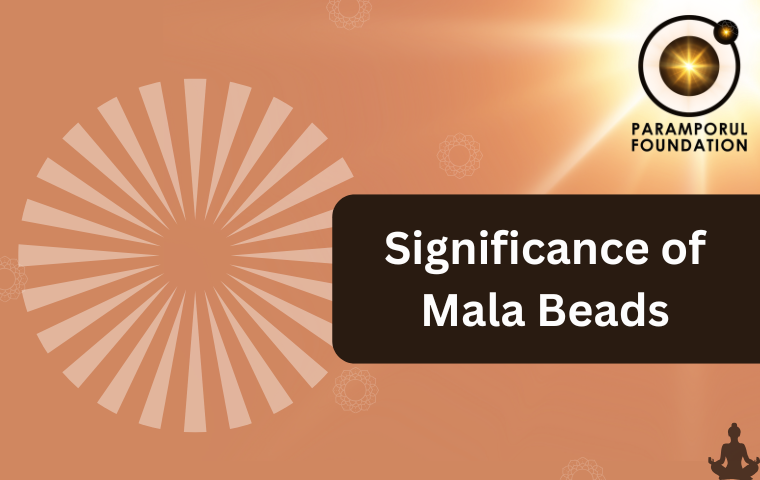Mala beads, also known as japamalas or prayer beads, are used worldwide as a tool for meditation and spiritual practices. Originating over 3,000 years ago in India, mala beads have found an enduring place in practices of mindfulness, meditation, and personal reflection. The traditional mala necklace contains 108 beads, a number with deep spiritual and symbolic significance across cultures and religions.
What Are Mala Beads?

People use mala in meditation to help focus their minds. The term “mala” is derived from Sanskrit, meaning “garland,” and these beads have been incorporated into Hindu, Buddhist, and other spiritual practices. During meditation, users touch each bead of the mala as they repeat a mantra or affirmation, allowing for focused, repetitive chanting that aids in calming the mind. This is called Mantra Meditation. The largest bead, often called the “guru” bead, marks the beginning and end of a cycle and symbolizes a teacher or guide.
The Meaning of the Number 108
The number 108 appears frequently in spiritual traditions, especially in Hinduism and Buddhism. People consider this number sacred because it connects us to universal patterns and energies. Here are a few explanations:
Astrological Connection
In Vedic astrology, the 12 zodiac signs and 9 planets multiply to equal 108 (12 x 9 = 108). People believe that using a mala with 108 beads helps channel planetary energies in a positive way.
Sanskrit Letters
The ancient Sanskrit language has 54 letters, and each has a masculine (Shiva) and feminine (Shakti) form, adding up to 108 letters. A mala with 108 beads honors this balance of energies.
Astronomical Significance
In astronomy, the diameter of the sun is roughly 108 times the diameter of Earth. Additionally, the distance from Earth to the sun is around 108 times the sun’s diameter. This cosmic relationship is one reason why 108 is a symbol of universal unity.
Human Emotions and Desires
According to yogic philosophy, humans have 108 earthly desires, as well as 108 feelings associated with the past, present, and future. Using a 108-bead mala can help people transcend these desires and focus on inner peace.
Nadi Lines and Chakras
In yoga and Ayurveda, it’s believed that 108 energy channels, or nadis, converge in the heart chakra, making 108 a number connected to spiritual balance and well-being.
How Are Mala Beads Used in Meditation?

Mala beads are most commonly used to count mantras during meditation. Practitioners hold the mala and move from one bead to the next with each repetition of their mantra. This repetitive action helps ground the practitioner in the present moment, focusing the mind and providing a rhythm to meditation. By the end of a 108-bead cycle, a meditator can feel more relaxed, centered, and connected with their intentions.
Benefits
The practice of using mala during meditation brings both mental and physical benefits:
- Enhanced Focus: Counting the beads during meditation helps direct attention away from distractions, making it easier to enter a state of mindfulness.
- Stress Reduction: Repeating calming mantras with each bead can reduce stress and promote relaxation. Regular practice has even been linked to lowered blood pressure and improved emotional well-being.
- Connection to Tradition: Using a mala allows practitioners to engage with a practice that has brought spiritual clarity to people for thousands of years. It can provide a sense of belonging and purpose, connecting us to the wisdom of past generations.
Mala Beads Beyond Meditation

Mala beads are also often worn as a reminder of personal intentions, goals, or affirmations. Many people find comfort in having their beads with them, especially during stressful or uncertain times. People make beads from various materials like gemstones, wood, and seeds, each with unique qualities and symbolic meanings. For example, people associate rudraksha seeds with protection and compassion, while they believe gemstones like amethyst bring clarity and peace.
Embracing the Symbolism
While mala beads have grown popular as fashion accessories, they carry a deeper significance. Understanding the history and purpose behind them can enrich one’s practice, turning the act of wearing or using beads into a meaningful and intentional experience. For those beginning meditation, beads provide a simple yet powerful way to cultivate mindfulness and set positive intentions, whether for peace, focus, or personal growth.
In conclusion, the 108-bead mala is much more than a beautiful accessory. It represents centuries of tradition, deep spiritual meaning, and a path toward personal and spiritual growth. Whether used as a tool for meditation or as a symbolic reminder of one’s goals and intentions, mala beads are a valuable companion on the journey to inner peace and self-discovery.

